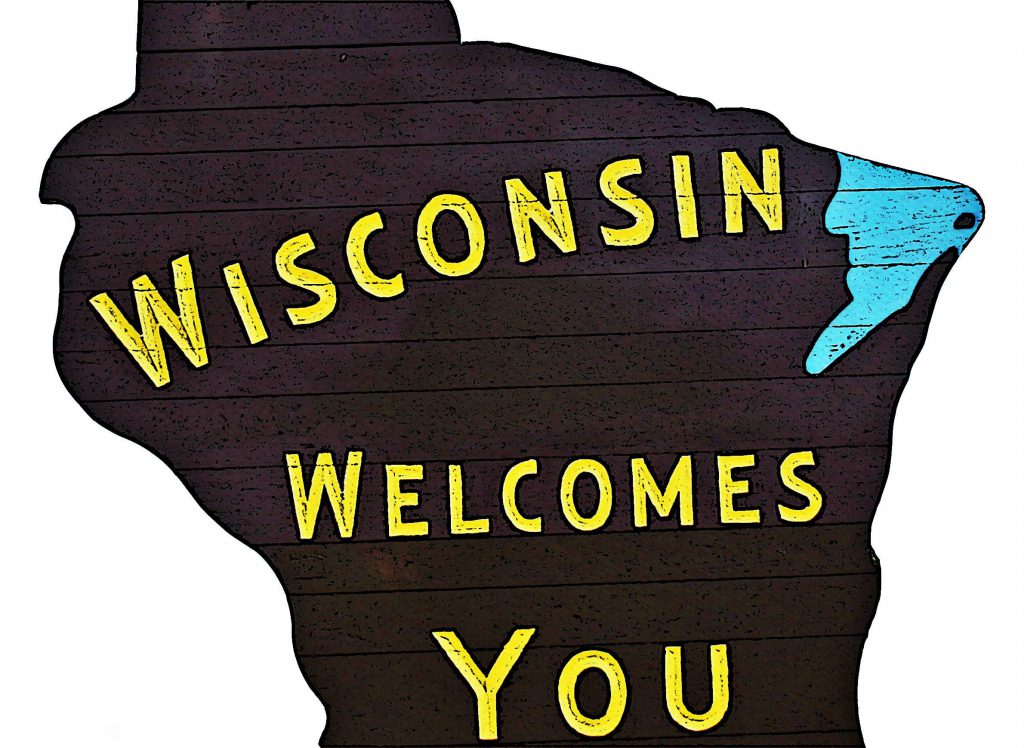Lagging Migration Hurts Business Startup Rate?
Research suggests a lower rate of in-migration to Wisconsin could retard entrepreneurship.
New business startups led by entrepreneurs are vital to a vibrant and strong economy, and, in entrepreneurship, Wisconsin tends to lag other states.
The Kauffman Foundation, a private philanthropic organization devoted to cultivating entrepreneurship in the United States, has monitored entrepreneurial activity in Wisconsin and the nation for years. Kauffman’s most recent analysis, released in 2017, places Wisconsin last among large states in startup activity for the third straight year. In fact, research suggests that the slow pace at which the state’s economy recovered from the Great Recession can be at least partly explained by the low rate of new business activity.
The factors that influence new business startups have been examined from many perspectives, including how aspects of a region’s entrepreneurial culture, or entrepreneurial climate may encourage business formation and expansion. As human capital, or the education and skills of a region’s population, is a primary source of innovation and entrepreneurial skills, mechanisms that facilitate its accumulation in a region, such as incoming skilled workers or advanced industries, influence its entrepreneurial prospects. Barriers to education and training, as well as out-migration and other such factors can limit human capital and, by extension, entrepreneurship.
Another strand of research considers how population change influences entrepreneurship. Population changes determine the size of the potential market for entrepreneurs, but can also shape this pool as people with different ideas, skills, resources and risk-preferences — all elements of entrepreneurship — move to and from a state. These potential connections between population dynamics and entrepreneurial activity are relevant when considering how Wisconsin’s population has changed over time.
For instance, Wisconsin has for decades lagged the nation in population growth. The low growth rate is a reflection of the state’s aging demographic but also partially due to its migration patterns. Wisconsin’s out-migration rate of working-age college graduates is one of the lowest in the U.S.; the state’s in-migration rate is even lower. Taken together the low rates of people moving to and from the state suggest Wisconsin has some of the lowest rates of population churn in the United States.
If entrepreneurship is a reflection of the population dynamics of an economy, then states with high levels of this activity should also have greater levels of population growth, particularly if it is driven by net in-migration and a greater share of the population born outside the state.
The logic is straightforward: The introduction of new people, whether they are migrants from other states or other countries, brings to a region new ideas and different ways of doing things. These new ideas can subsequently drive innovation, address underserved market niches and lead to more entrepreneurship. That is the theory, but what do the data say?
A simple plot comparing startup activity and state population growth rates between 2000 and 2016 reveals a strong positive relationship between the two variables.
That is, states that have higher levels of population growth do indeed see higher levels of startup activity. This relationship is not surprising, as greater rates of population growth likely create greater demand for goods and services. These higher levels of demand in turn generate a greater response from entrepreneurs of many types. In Wisconsin, Madison stands out as a place with higher levels of in-migration and entrepreneurship.
Additionally, a simple comparison of entrepreneurship and net migration rates in states also reveals a strong relationship.
States that have higher levels of positive net migration see higher levels of entrepreneurial activity. Further, Wisconsin, which ranks lowest in the U.S. on the Kauffman Index of startup activity, ranks 35th in the nation for net migration with a modest level of net out-migration, suggesting that low in-migration is more likely the concern.
States that have high levels of positive net migration and high levels of entrepreneurship include Nevada, Florida, Colorado and Arizona. But some states, such as Wyoming and New York, have experienced high levels of entrepreneurial activity despite high levels of people moving away. A natural question arises from this phenomenon: What is it about these states that makes them centers of entrepreneurship?
Another way to consider population dynamics is the share of a state’s population that was born within the state. The share of a state’s residents who were also born there provides a perspective on how in- and out-migration have shaped a state’s population over a longer time period. A simple chart again reveals that states with a higher percentage of the population born in the state have lower levels of startup activity.
Wisconsin ranks fifth in the nation in terms of the proportion of the population born in the state at 71.6%. That compares to a national average of 58.1%. Only Louisiana, Michigan, Ohio and Pennsylvania have higher shares of their population born in the state than Wisconsin.
A final measure of population dynamism is the share of a state’s population that is foreign born. Economic research strongly suggests that higher levels of international migration are linked to higher levels of entrepreneurship. For example, estimates suggest that immigrants represent about 30% of all U.S. entrepreneurs while the U.S. Census Bureau estimates immigrants make up only 13% of the population. A comparison of the percentage of each state’s population that is foreign born to its startup activity supports this notion.
Wisconsin ranks 35th nationally with only 4.8% of its population foreign born.
The logic that a more diverse population, through simple migration, leads to higher levels of entrepreneurship hinges on the introduction of new ideas into an existing market. Migration exposes a population to different products and services along with alternative ways of conducting business. It could also be the case that people who are willing to relocate, particularly from a foreign country, are more willing to take on risk, which can foster a more entrepreneurial environment.
An alternative way to view this relationship is that entrepreneurial regions are more attractive to migrants and accepting of those migrants. Regions that are open to new people, particularly international immigrants, and new ideas tend to be inherently more entrepreneurial.
How Do Newcomers To Wisconsin Influence New Business Startups? was originally published on WisContext which produced the article in a partnership between Wisconsin Public Radio and Wisconsin Public Television.





















